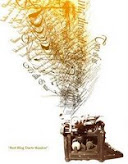It certainly has been awhile! I’m student teaching this semester (and loving every minute of it) so things have been busy around here. I have had some time the last few days, though, because we got hit by a ton of snow and schools have been closed now for over a week! I’m sure the kids are loving it, but I’m ready to get back.
I spent some time last week working on a lesson for our poetry unit and I thought some of you might be interested in what I put together. Some time ago I read an article by Judith Jester in which she talked about how we “read” paintings in the same way we read literature. I wanted to use this idea so I went on a hunt for four poems that I could match to four paintings. This was a lot more difficult than you’d think! Below is what I found.

I matched Edna St. Vincent Millay’s “Afternoon on a Hill” with Claude Monet’s Poppies at Arguenteuil (shown above).

Deborah Chandra’s poem “Bubbles” matched Jean-Baptiste-Simeon Chardin’s Boy Blowing Bubbles.

Tiger in a Tropical Storm (Surprised!) by Henri Rousseau seemed a great illustration of “Tiger Dance” by Carconti Etva.

And “Wind Pictures” by Mary O’Neill (scroll toward the bottom of the page to find the poem) paired well with N.C. Wyeth’s The Giant.
All of the poems except Tiger Dance can be found in The 20th Century Children’s Poetry Treasury selected by Jack Prelutsky. It’s really a great book. It has so many wonderful poems, all illustrated superbly by Meilo So.
My thought is to have the students read each poem and look at each painting and decide which painting to pair with which picture. Then they’ll write about how they made the pairings.
I’m excited about this lesson. I’ll let you know how it goes.
Return to main page.
 Yes! I did get to teach my pairing paintings and poems lesson! I thought it went very well. I began by displaying Rousseau's Surprised! (shown above) and brainstorming with the class everything we saw in the painting. Then we decided the main idea of the painting.
Yes! I did get to teach my pairing paintings and poems lesson! I thought it went very well. I began by displaying Rousseau's Surprised! (shown above) and brainstorming with the class everything we saw in the painting. Then we decided the main idea of the painting.














